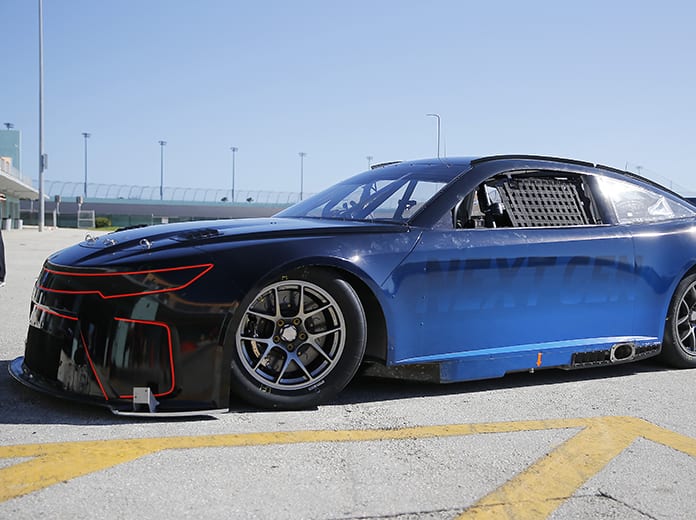DOVER, Del. – Cole Custer has been a busy man the last four days.
After two days of racing at Dover Int’l Speedway in the NASCAR Cup Series, Custer stuck around for another two days to take part in the Next Gen car test at the one-mile concrete oval located in Delaware.
“Right now, I’m wore the hell out,” Custer said Tuesday with a laugh. “We’ve surpassed 1,000 miles in four days at Dover and it’s probably the toughest track for that physically.”
The test, which took place Monday and Tuesday, is the first test of NASCAR’s Next Gen race car since early March prior to the COVID-19 pandemic. The pandemic forced NASCAR officials to delay the introduction of the Next Gen car until 2021.
“We were making really good progress and were on target to launch the car in 2021, but obviously with everything happening with the pandemic, we had to take a step back,” said John Probst, NASCAR Senior Vice President of Racing Innovation. “But it’s great to be back out here testing this car. We’re all racers – we wanted to get back on track as soon as it was possible, and safe.”
For Custer, a rookie at NASCAR’s top level who earned his first Cup Series victory earlier this season at Kentucky Speedway, advised that there were several things different about the Next Gen car when compared to the current car.
However, one thing in particular stood out to the 22-year-old.
“The biggest thing is definitely the steering for me, and then also probably the tires feel a little bit different, just how they slip and how much you can get away with getting the car loose,” Custer explained. “It seems like with how the steering is and how the tires are you can’t really get away and how the aero is also, you can’t get away with driving the car sideways as much. It’s just little differences here and there, but probably the thing that stands out the most is the steering.”
According to Probst, part of the goal of the two-day test was to test many of the parts and pieces being used in the car to see what they can handle
“Dover is one of our highest load tracks, so we want to put heat in the car and laps and mileage on the parts and pieces,” said Probst. “Our goal is to get 500 miles on the car this test and we finished Monday at 226, so we’re on a good pace.
“The most important thing for us is to validate what we think is going to happen. It’s important that when the team adjusts the car, it responds in a manner that is predictable. We’re in a good place in overall development of the car and now we can focus on handling and driveability. So far, so good.”
Custer’s experience with the car leaves him to believe that NASCAR has worked out most of the major bugs in the car. Now it’s a matter of testing the car at the various race tracks to iron out track specific bugs before moving on to having multiple cars on track together to see how they race around each other.
“I would say they’ve worked the bugs out for the most part now,” Custer said. “It’s just a matter of trying to go to all the different race tracks and figure out what the different bugs they have to work out at these different race tracks because every single one is gonna have their own kind of thing. So just the more that they can go to different racetracks and test, the better it’s gonna be. I think at this point, you can go out there and run laps and you can probably put some cars out there together, but the next stage is gonna find out aero-wise what they do in traffic and what’s gonna make them better or worse.”
